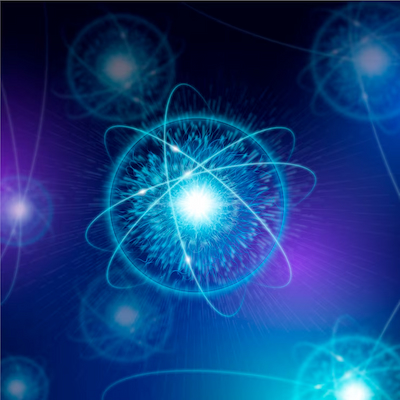
Missing baryonic matter is one of the most intriguing mysteries in modern cosmology. Although we know that baryonic matter makes up stars, planets, and all visible matter in the universe, a significant portion appears to be absent from our observations. This “missing matter” is not easily detectable, which leads scientists to question where it is hiding and how we might find it.
In recent years, various research efforts have aimed to locate this elusive matter. Scientists use a range of methods, from telescopes that capture cosmic radiation to advanced computer simulations, to map the presence of missing baryonic matter. This quest is not merely a matter of scientific curiosity; it has profound implications for our understanding of the cosmos and fundamental physics. Through these studies, we may gain insights into the nature of dark matter and dark energy, which make up most of the universe.
How Studies on Missing Baryonic Matter Work
Studies of missing baryonic matter involve a combination of astronomical observations and theoretical modeling. Scientists use state-of-the-art telescopes to observe cosmic phenomena that may reveal the presence of this matter. For example, the cosmic microwave background radiation is one key to understanding the distribution of baryonic matter in the universe. This radiation is like a “photograph” of the universe when it was only 380,000 years old, and the analysis of its fluctuations can provide clues about the amount of baryonic matter that was present.
In addition to observations, researchers use computer simulations to model the evolution of the universe. These simulations take into account interactions among baryonic matter, dark matter, and dark energy, allowing scientists to test various scenarios and see which ones align with actual observations. This is essential for understanding how baryonic matter clusters and spreads over cosmic time. Thus, the combination of observation and modeling becomes a powerful tool in the search for missing baryonic matter.
Another important approach involves studying galaxies and large-scale structures in the universe. By observing how galaxies form and interact, scientists can infer the amount of baryonic matter present. This analysis is often supported by gravitational lensing studies, where light from distant objects is distorted by the gravity of massive galaxies, revealing matter that cannot be directly seen. These techniques help create a more complete picture of the distribution of missing baryonic matter.
Finally, research into missing baryonic matter also includes the analysis of chemical elements and primordial nucleosynthesis. The elements formed in the first moments after the Big Bang can provide crucial information about the total amount of baryonic matter.

Advantages of Understanding Missing Baryonic Matter
Understanding missing baryonic matter offers several benefits beyond mere scientific curiosity. First, it helps us understand the formation and evolution of cosmic structures. Baryonic matter is fundamental to the formation of stars and galaxies, and studying it can reveal how these structures developed over time. This understanding is essential to cosmology, as it allows us to trace the history of the universe from the Big Bang to the present day.
Additionally, studying missing baryonic matter can provide insights into the nature of dark matter and dark energy. Although baryonic matter accounts for only a fraction of the universe’s total matter, its interaction with dark matter is crucial for understanding how galaxies and other structures form and evolve. By mapping the distribution of baryonic matter, we can gain clues about dark matter, which remains one of the greatest mysteries in modern physics.
Another significant benefit is that research into missing baryonic matter can lead to technological advancements. The techniques developed to detect this matter—such as high-precision telescopes and complex computer simulations—can be applied in other areas of science and engineering. These innovations may improve scientific instruments and inspire new approaches in fields like medicine and information technology.
Finally, understanding missing baryonic matter helps answer fundamental questions about the origin and fate of the universe. The search for this matter is, in essence, a search for our place in the cosmos. By uncovering the mysteries of baryonic matter, we expand our knowledge not only of the universe but also of ourselves and our existence within it.
How to Identify Missing Baryonic Matter in the Universe
Identifying missing baryonic matter in the universe is a challenge that requires a combination of observational and theoretical techniques. Here are some of the most common approaches used by scientists to locate this elusive matter:
-
Using Telescopes to Detect Cosmic Radiation: Specialized telescopes observe the cosmic microwave background, which provides information about the distribution of baryonic matter in the early universe.
-
Observing the Formation of Galaxies and Large-Scale Structures: Studying how galaxies form and interact allows scientists to infer the presence of baryonic matter.
-
Analyzing Black Holes and Their Gravitational Effects: Black holes, with their intense gravitational pull, can reveal baryonic matter through interactions with surrounding matter.
-
Studying Normal Matter in Different Environments: Research in various environments—such as galaxy clusters and star-forming regions—helps identify where baryonic matter may be located.
-
Investigating the Interaction Between Baryonic Matter and Dark Matter: This interaction is key to understanding the universe’s dynamics and can offer clues about missing baryonic matter.
-
Conducting Cosmological Computer Simulations: Advanced simulations allow scientists to test different scenarios for the formation of the universe and check which ones match observed baryonic matter.
These approaches, when combined, offer a clearer picture of the presence and distribution of missing baryonic matter in the universe. Through collaboration between observation and modeling, scientists are increasingly close to unraveling this cosmic puzzle.
The Role of the Warm–Hot Intergalactic Medium (WHIM)
A leading theory suggests that a large portion of the missing baryonic matter is located in the Warm–Hot Intergalactic Medium (WHIM), a diffuse, hot plasma found between galaxies. This gas is difficult to detect because it emits very weak X-rays and ultraviolet radiation. However, recent advances in X-ray astronomy and absorption line studies using distant quasars have begun to confirm the existence of this hidden reservoir of matter.
As technology advances, future missions and telescopes will drastically improve our ability to detect and map missing baryonic matter. Projects like the Athena X-ray Observatory and the Square Kilometre Array (SKA) are expected to provide unprecedented sensitivity to the diffuse intergalactic gas where baryons may reside.
Additionally, machine learning and artificial intelligence are being integrated into the analysis of astronomical data. These tools will enable faster and more accurate detection of subtle signals, helping scientists identify faint baryonic structures that were previously overlooked. The future of this field holds the promise of a complete baryon census—an essential step in constructing a coherent and complete model of the universe.

Did You Enjoy Learning About Missing Baryonic Matter?
Exploring the mystery of missing baryonic matter takes us to the frontier of modern cosmology. This elusive component of the universe challenges our understanding of how matter is distributed and how galaxies, stars, and even life came to be. As we refine our tools and techniques, each discovery brings us closer to completing the cosmic puzzle.
If this topic sparked your curiosity, keep exploring! The quest to uncover the universe’s hidden matter is ongoing and full of surprises. Through science, we continue to uncover not only the nature of the cosmos—but also our place within it.
Frequently Asked Questions
What is missing baryonic matter?
Missing baryonic matter is normal matter we cannot currently see. It is made up of protons and neutrons.
Where might it be hiding?
It may be located in galaxies, galaxy halos, or clouds of gas. It’s difficult to detect directly.
Why is it important to study it?
Studying missing baryonic matter helps us understand how the universe formed and evolved. It’s a key piece of the cosmic puzzle.
What techniques are used to locate missing baryonic matter?
Astronomers use telescopes and computer simulations. These tools help map where the missing baryons might be.
Can missing baryonic matter be found on Earth?
No, this matter is in space. However, studying it helps us better understand our own galaxy.
Could missing baryonic matter affect our understanding of dark matter?
Yes. Mapping the baryons helps us study how they interact with dark matter, revealing clues about both components.
Is new technology helping to find missing baryons?
Definitely. New telescopes, data analysis tools, and future missions will greatly enhance our ability to detect this hidden matter.

